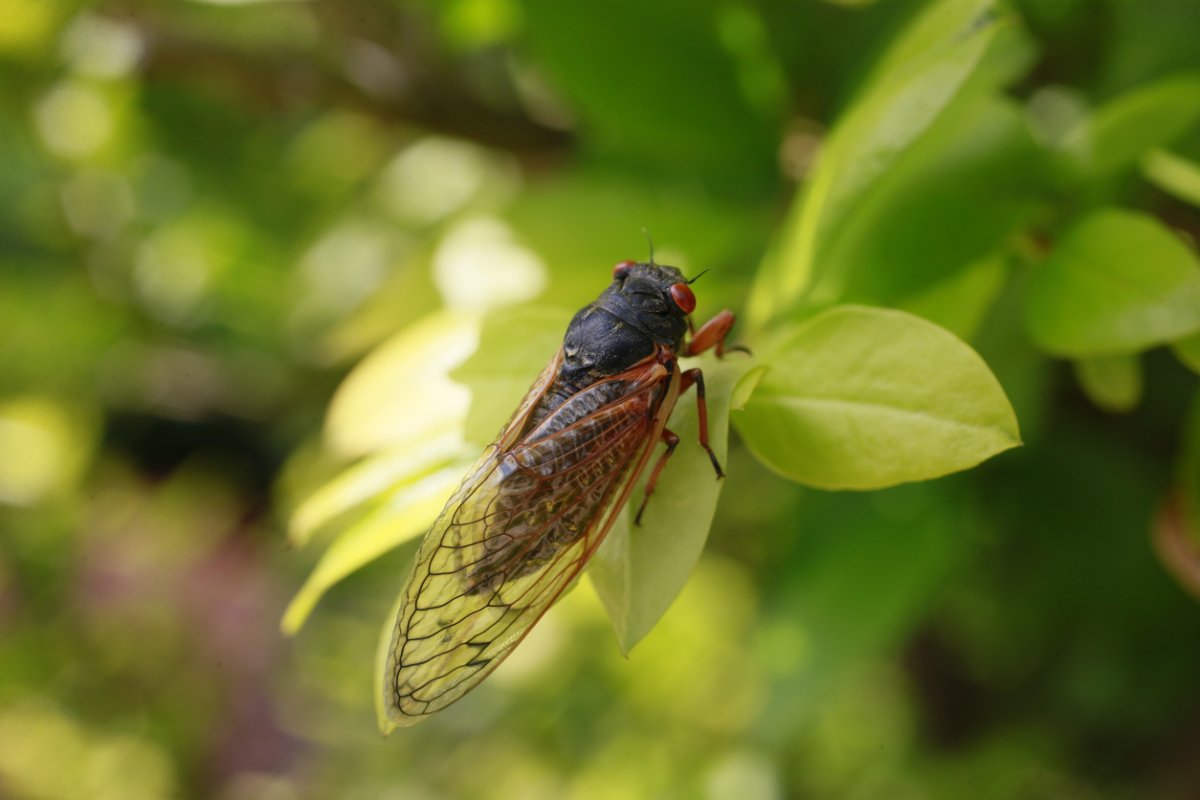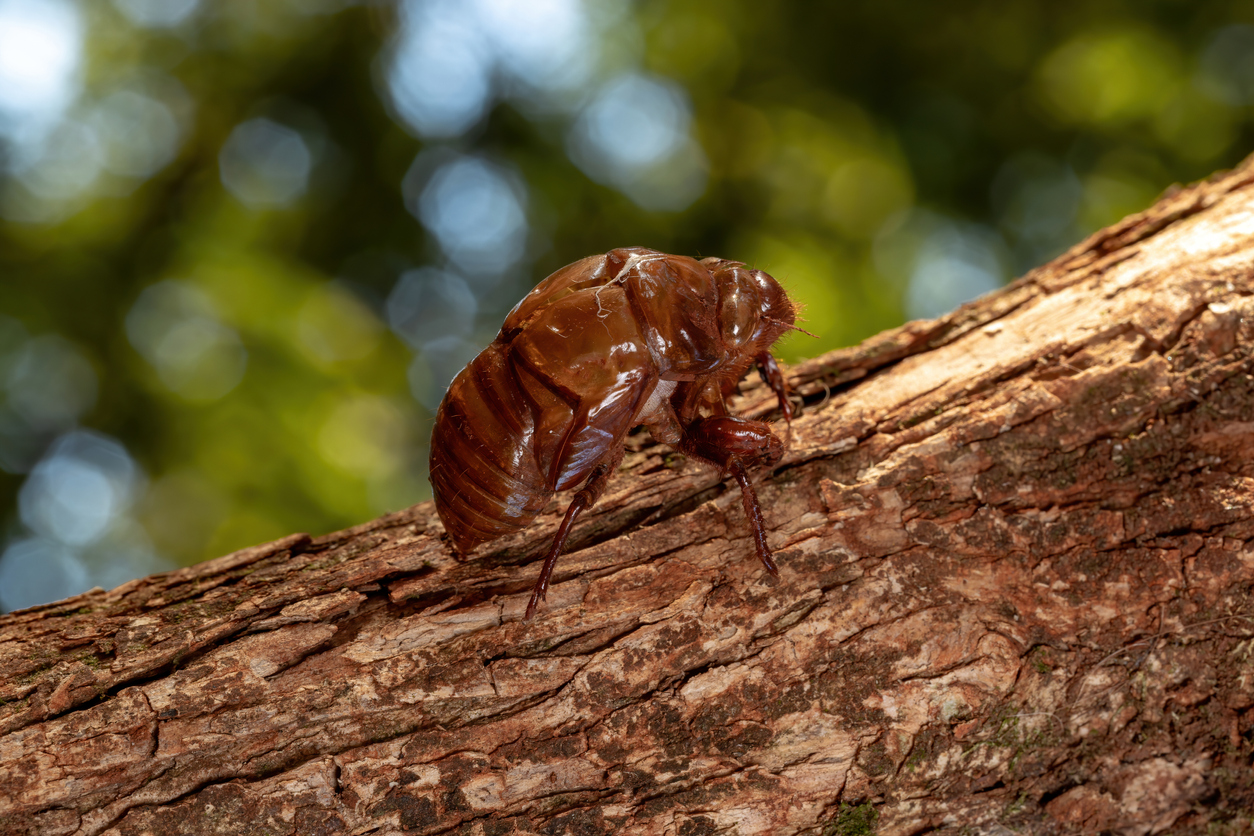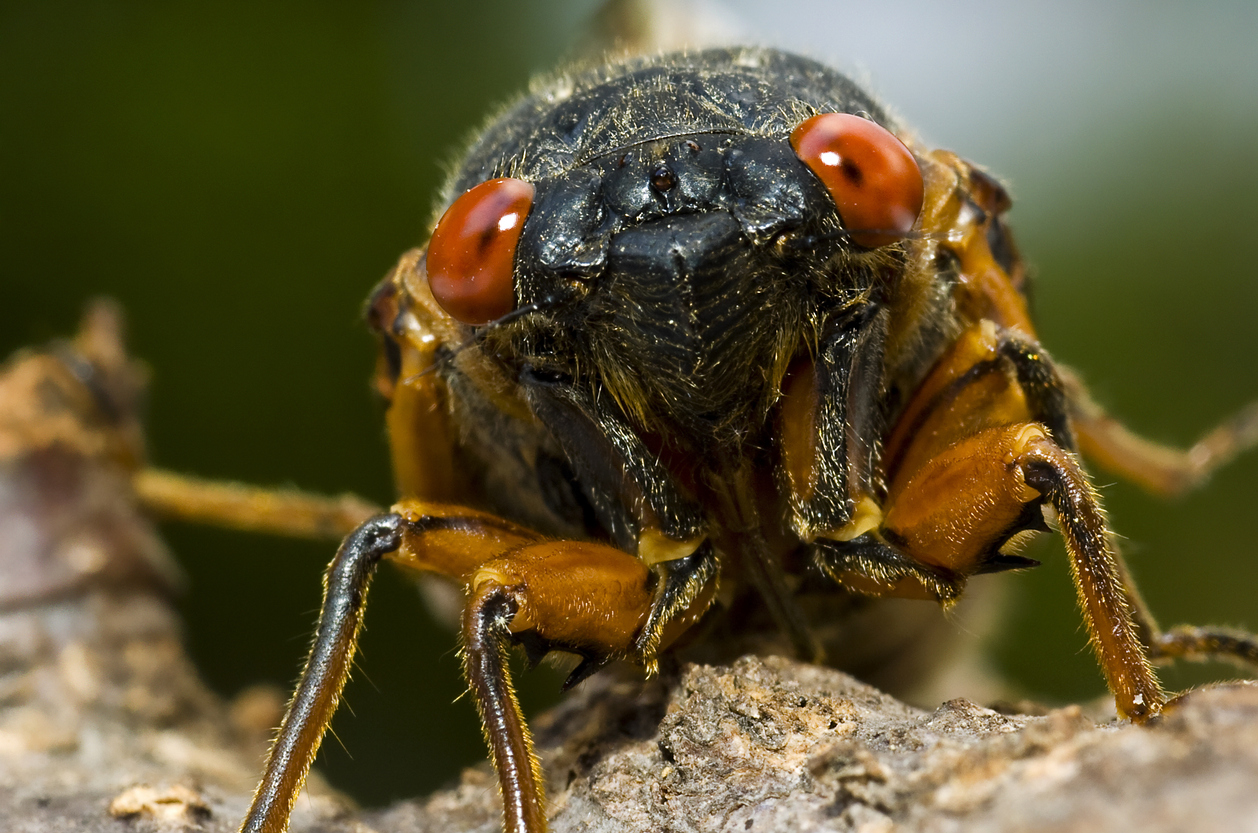

We may earn revenue from the products available on this page and participate in affiliate programs. Learn More ›
Headlines abound about the 2024 periodical cicada emergence. It is true that the 13-year Brood XIX, the largest named brood, will co-emerge with Brood XIII, a 17-year cycle cicada. However, these two broods appear in areas adjacent to one another that don’t overlap much and basically will affect only small patches of wood near Springfield, Illinois. According to John Cooley of the Department of Ecology and Evolutionary Biology at the University of Connecticut in Hartford, “Maps and articles talking about overlaps and super-emergences are incorrect.”
Sometimes we can’t help but let our imaginations run wild, but there’s no reason to think of this periodical cicada emergence as anything more or less than an amazing part of nature. If you’re worried about what will happen as these big, harmless bugs come out of the ground, we have answers.
Periodical cicada broods co-emerging can be a rare event.
Cicadas include more than 3,000 species of large, stout, oval, winged insects. Periodical cicadas are of the Magicicada species. The term “brood” refers to all those cicadas in the same life cycle that emerge in a particular year. There are 12 broods of 17-year cicadas and three broods of those that emerge after 13 years in the ground. About every 5 to 6 years, a 13-year brood and 17-year brood emerge in the same year, but in clearly separate areas. According to Cooley, 2024 marks the following special circumstances for periodical cicadas:
- For the first time since 2015, a 13-year brood will emerge in the same year as a 17-year brood.
- Adjacent (geographically) 13-and 17-year broods will emerge in the same year for the first time since 1998.
- Broods XIX and XIII will co-emerge for the first time since 1803.
Further, Cooley says, we “will be able to see all seven named periodical cicada species as adults in the same year.” The emergence of two broods in adjacent parts of Illinois in 2024 is an event that happens only every 221 years.

Cicadas rely on forests.
Adult cicadas feed on trees and shrubs by piercing the tender bark and sucking out sap, and the underground larvae suck juices from plant roots. So, they need either woods or established forested areas in urban centers (such as city parks) to survive. Females make tiny holes in twigs to lay hundreds of eggs. Ten weeks later, when the eggs hatch, the nymphs fall to the ground and immediately burrow down to spend the next several years feeding on roots and growing to adulthood.
The life cycle for each particular species is locally synchronized with predator cycles. Occasionally, a brood emerges in an off year; these are called stragglers, and it’s possible that some will appear in 2024 as well in their off-cycle.
The 2024 co-emergence will affect localized areas (watch out, Illinois).
In 2024, broods XIII and XIX will emerge in Illinois. Brood XIII is known as the Northern Illinois Brood, and once emerged further north in Michigan. Reports of this brood also have been recorded in areas around the Michigan/Indiana/Ohio border. Brood XIII is a 13-year brood. Brood XIX also is a 13-year brood. Named the Great Southern Brood, it is the largest of the periodical cicada broods in terms of geographic area. Although these cicadas emerge in the Southeast and areas of the Midwest from Iowa to Oklahoma, a northern portion of the brood appears with Brood III in southern Illinois. In general, Illinois is a periodical cicada “hot spot,” in which all seven recognized species and both 13- and 17-year broods will emerge.
Still, Cooley says the cicada emergence will be a subtle event, even for the Prairie State. He likens it to a journey from Interstate 57 in Chicago beginning this May with patches of cicadas only in areas with older tree canopies. The patchy sightings continue when heading south wherever woods are patchy. According to a narrative about the emergence posted on UConn’s website, “Nowhere along the way will you encounter double densities or anything at all to tip you off that you are in a co-emergence year or that you just witnessed something unusual.”
Brood interbreeding is not a major concern.
Although broods are distinctly different species of periodical cicadas, they can interbreed and produce hybrids. However, it is a complex process. As an example, a hybrid from 13-year brood and 17-year brood parents doesn’t have a cycle that splits the difference and emerges in 15 years. Scientists predict that the hybrid offspring will most likely display the traits of one or the other and emerge in either 13 or 17 years, along with the next generation of one of the parental broods. “As for interbreeding, any hybrids would just meld in,” says Cooleuy, “and if there were any effects at all, they would not be evident for decades.”
RELATED: How to Get Rid of Cicadas
The emergence will be loud, but not that loud.
Only about half of the cicadas that emerge make the characteristic loud buzzing sound. That sound represents the males trying to attract females. It has been estimated that the peak noise level of the periodical cicada emergence can reach 100 decibels. For comparison, that matches the noise of a lawn mower—impressive for a bunch of bugs, but not intolerable.
Further, most of their singing to attract mates occurs during the day, although light from a full moon or artificial sources, excessive heat, or overcrowding might cause some nighttime noise. Since there will not be significant overlaps or double densities of the 2024 broods, especially in urban areas, it’s likely that this year’s cicada season will sound much like those in more typical years.
It will be messy, but not destructive.
In addition to mating and making noise, the other activity associated with cicada infamy is their molt. After emerging from the ground as a final-stage nymph, the cicada climbs a vertical surface and sheds its exoskeleton. Soon afterward, the adult “skin” hardens, their wings inflate, and they fly away. What’s left is a nearly perfect silhouette shell, often the first sign that the insects are present. The shed material isn’t nearly as messy as some other insect molts that blow and drift in the wind. Cicada shells mostly cling in place on the sides of trees.
As for concerns about damage to gardens or landscapes, the insects generally concentrate on areas with trees as old as their life cycle that can handle their root feeding. “The USDA does not consider these to be pest insects,” says Cooley. Still, ‘they can be devastating to orchards, tree nurseries, and delicate ornamental plants,” he adds. However, even where they cause some browning of leaves on forest tree branches (flagging), Cooley says the trees do not appear to show long-term effects.
The same is generally true of lawns, vegetables, and other garden plants; the insects don’t feed on leaves. If cicadas are emerging in your area, you can protect young trees and tender plants with bird netting with holes smaller than ⅜ inches. Secure the netting at the bottom so they cannot climb up from the ground.
RELATED: 15 Natural Pest-Control Strategies for Your Yard and Garden

Cicadas benefit the ecosystem.
Nature’s processes are subtle and interwoven, with each element and creature playing a unique role. The cicadas play several roles in forest ecology:
- In the nymph stage, they move around beneath the soil, feeding on tree roots, aerating compacted soil, and allowing deeper root and rain penetration.
- As adults, cicadas prune branches, allowing more sunlight to reach the seedlings on the forest floor.
- A heavy emergence serves as a protein feast for bug-eating birds, rodents, bats, insects, fish, reptiles, and amphibians.
- The cast carcasses from wildlife feeding on cicadas can break down like compost and add to soil nutrients.
According to Cooley, ants will often make off with cicada bodies, and he says there is plenty of research on cicadas and nutrient cycling; you can certainly add gathered exoskeletons to your compost pile.

Cicadas are harmless to people and pets.
Cicadas are big, loud, and a bit messy. It’s no wonder some people get a little creeped out by them. But cicada adults do not bite or sting, so they don’t harm people or pets. In the worst case, a curious dog or cat might munch on a cicada exoskeleton and have an upset stomach temporarily, since the shells are difficult to digest. They are not toxic.
If you live in an area where 2024 cicadas will emerge, avoid the urge to panic, and do not pull out any pesticides. Just sit back and enjoy the natural cycle of these intriguing insects and their benefits to wildlife.
